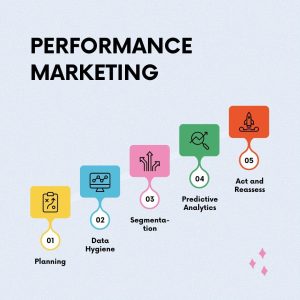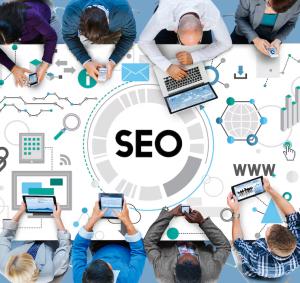Programmatic Advertising Services: Revolutionizing Digital Marketing
5 min read
In the rapidly evolving world of digital marketing, programmatic advertising services have emerged as a game-changer. Programmatic advertising uses automated technology to buy and sell online advertising space, optimizing the ad buying process for efficiency and effectiveness. This comprehensive guide delves into the intricacies of programmatic advertising, its benefits, components, and how businesses can leverage it to enhance their marketing strategies.
Understanding Programmatic Advertising
Programmatic advertising refers to the automated process of buying and selling ad inventory in real-time through a sophisticated system that utilizes algorithms and data insights. This technology-driven approach allows marketers to target specific audiences with precision, delivering personalized ads at the right time and place.
Key Components of Programmatic Advertising
- Demand-Side Platforms (DSPs): These platforms enable advertisers to purchase ad space in an automated fashion. DSPs analyze large datasets to help advertisers reach their target audience more effectively.
- Supply-Side Platforms (SSPs): These platforms allow publishers to manage and sell their ad inventory. SSPs help publishers maximize their ad revenue by connecting them with multiple advertisers.
- Ad Exchanges: These are digital marketplaces where advertisers and publishers buy and sell ad inventory. Ad exchanges facilitate real-time bidding (RTB) auctions.
- Data Management Platforms (DMPs): These platforms collect, organize, and analyze data from various sources to provide valuable insights for targeting and optimizing ad campaigns.
Benefits of Programmatic Advertising
1. Enhanced Targeting Capabilities
Programmatic advertising allows for precise targeting based on a wide range of parameters, including demographics, interests, behaviors, and geographic location. This precision ensures that ads are shown to the most relevant audience, increasing the likelihood of engagement and conversion.
2. Real-Time Optimization
One of the significant advantages of programmatic advertising is the ability to optimize campaigns in real-time. Automated systems continuously analyze performance data and adjust bidding strategies to maximize ROI. This dynamic approach ensures that ad spend is allocated efficiently.
3. Increased Efficiency
Programmatic advertising streamlines the ad buying process, reducing the need for manual negotiations and administrative tasks. This automation leads to faster execution of campaigns and allows marketers to focus on strategy and creativity.
4. Cost-Effective
By targeting specific audiences and optimizing bids in real-time, programmatic advertising minimizes wasted ad spend. Advertisers can achieve better results with lower costs compared to traditional advertising methods.
5. Scalability
Programmatic advertising enables businesses to scale their campaigns effortlessly. Whether targeting local markets or global audiences, the automated nature of programmatic ensures seamless scalability.
Types of Programmatic Advertising
1. Real-Time Bidding (RTB)
RTB is the most common form of programmatic advertising. It involves real-time auctions where advertisers bid for ad impressions as they become available. The highest bidder wins the ad placement. RTB offers flexibility and cost-efficiency, making it popular among advertisers.
2. Programmatic Direct
Programmatic direct involves direct deals between advertisers and publishers. Unlike RTB, there is no auction involved. Advertisers can secure premium ad inventory at a fixed price. This method provides more control over ad placements and ensures brand safety.
3. Private Marketplaces (PMPs)
PMPs are invitation-only ad exchanges where premium publishers offer their inventory to a select group of advertisers. PMPs combine the benefits of RTB with the quality assurance of programmatic direct, offering transparency and exclusivity.
Steps to Implementing a Programmatic Advertising Strategy
1. Define Your Objectives
Start by clearly defining your advertising goals. Whether it’s increasing brand awareness, driving website traffic, or boosting sales, having specific objectives will guide your programmatic strategy.
2. Identify Your Target Audience
Use data insights to understand your target audience. Identify their demographics, interests, online behavior, and preferred devices. The more detailed your audience profile, the better your targeting will be.
3. Choose the Right Platforms
Select the DSPs, SSPs, and ad exchanges that align with your objectives and target audience. Consider the capabilities of each platform and how they can enhance your programmatic strategy.
4. Develop Creative Assets
Create compelling ad creatives that resonate with your target audience. Ensure that your ads are visually appealing and aligned with your brand messaging. Use A/B testing to determine the most effective creatives.
5. Set Up Tracking and Measurement
Implement tracking mechanisms to monitor the performance of your programmatic campaigns. Use analytics tools to measure key metrics such as impressions, clicks, conversions, and ROI. Regularly review the data to identify areas for improvement.
6. Optimize Your Campaigns
Leverage the real-time optimization capabilities of programmatic advertising. Continuously analyze performance data and adjust your bidding strategies, targeting parameters, and creatives to maximize results.
7. Ensure Brand Safety
Implement measures to protect your brand from appearing on inappropriate or harmful content. Use tools and partnerships with reputable ad exchanges to ensure brand safety and maintain a positive brand image.
Challenges in Programmatic Advertising
1. Ad Fraud
Ad fraud is a significant concern in programmatic advertising. It involves fraudulent activities such as fake clicks, impressions, and conversions that inflate ad costs. To combat ad fraud, work with trusted partners and use advanced fraud detection tools.
2. Lack of Transparency
The complexity of programmatic advertising can sometimes lead to a lack of transparency in the ad buying process. Ensure transparency by working with reputable platforms and demanding detailed reports on ad placements and performance.
3. Data Privacy
With increasing concerns over data privacy, it’s essential to comply with regulations such as GDPR and CCPA. Use first-party data responsibly and obtain user consent for data collection and targeting.
4. Technical Complexity
Programmatic advertising involves sophisticated technology and data analysis. Ensure that you have the necessary expertise and resources to manage and optimize your programmatic campaigns effectively.
Future Trends in Programmatic Advertising
1. Artificial Intelligence (AI) and Machine Learning
AI and machine learning are transforming programmatic advertising. These technologies enable more accurate targeting, predictive analytics, and automated optimization, resulting in more effective campaigns.
2. Programmatic TV and Audio
Programmatic technology is expanding beyond digital ads to include TV and audio advertising. Programmatic TV and audio offer the same benefits of automated buying and targeting, bringing efficiency to traditional media.
3. Increased Use of First-Party Data
As third-party cookies phase out, the use of first-party data will become more prevalent. Businesses will need to focus on collecting and leveraging their own data for targeting and personalization.
4. Greater Emphasis on Transparency and Brand Safety
The demand for transparency and brand safety will continue to grow. Advertisers will prioritize working with partners who provide clear insights into ad placements and ensure a safe advertising environment.
Conclusion
Programmatic advertising services are revolutionizing the way businesses buy and sell ad inventory, offering unparalleled efficiency, targeting capabilities, and scalability. By understanding the key components, benefits, and challenges of programmatic advertising, businesses can develop effective strategies that maximize their ROI and enhance their digital marketing efforts.






